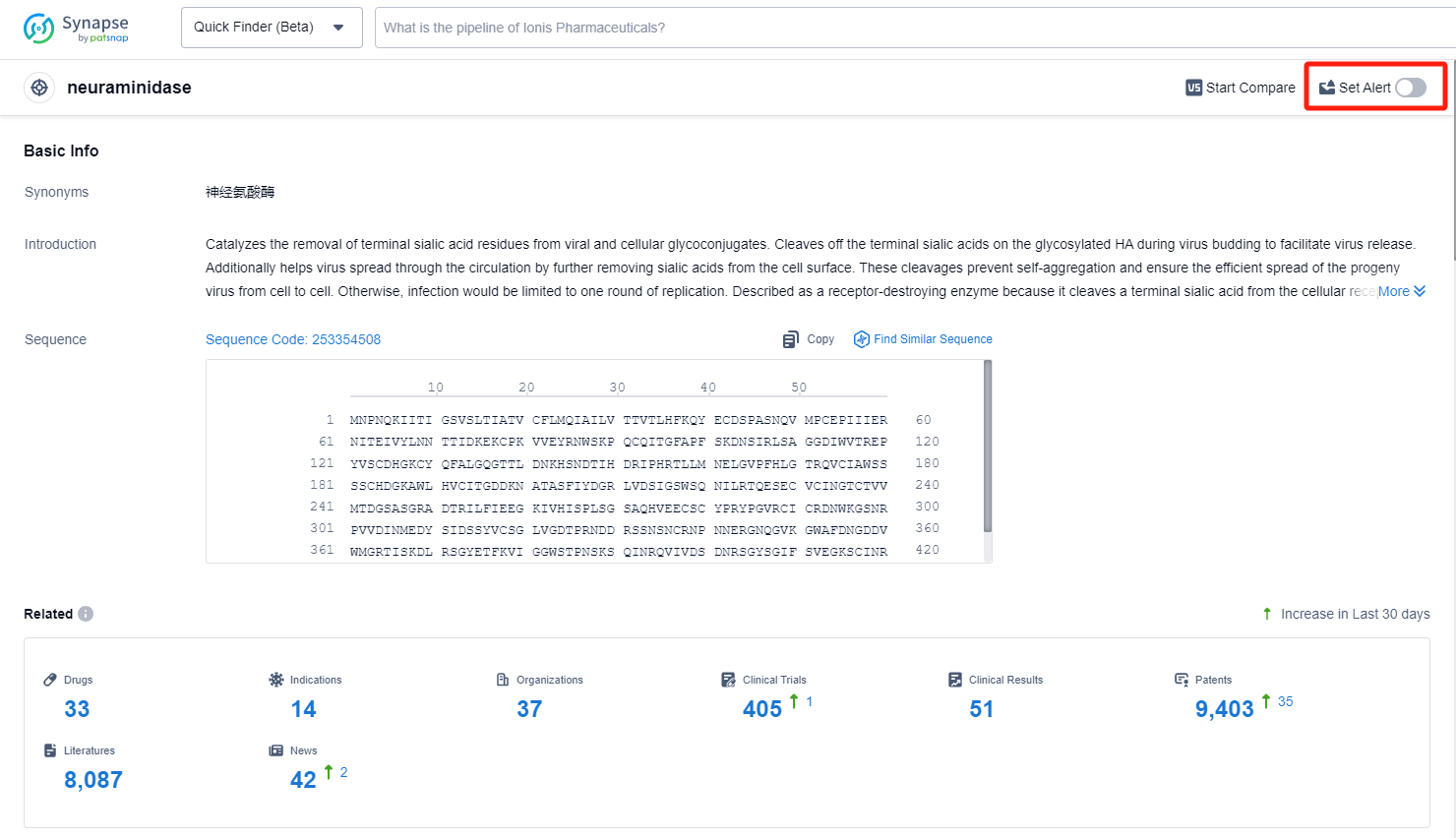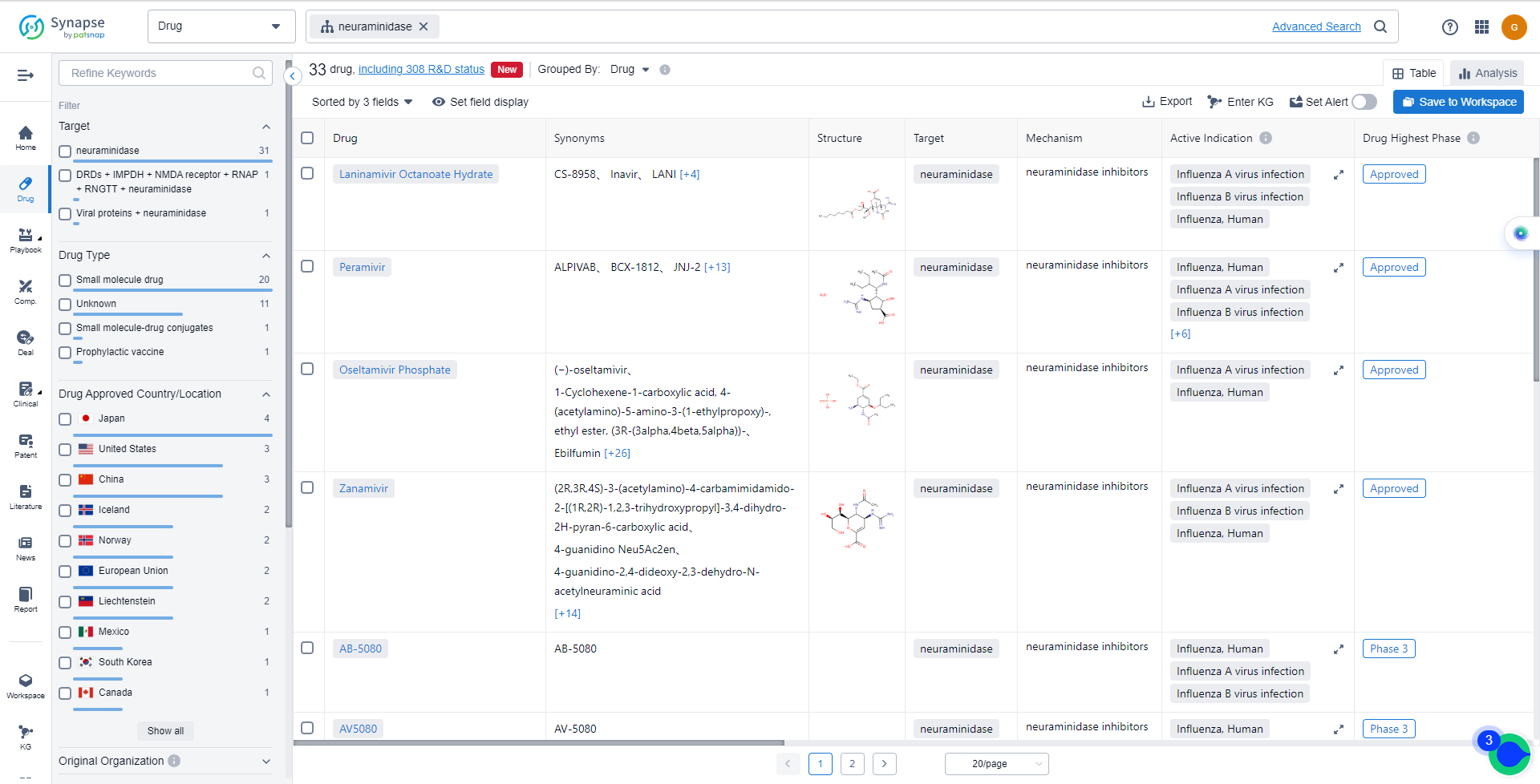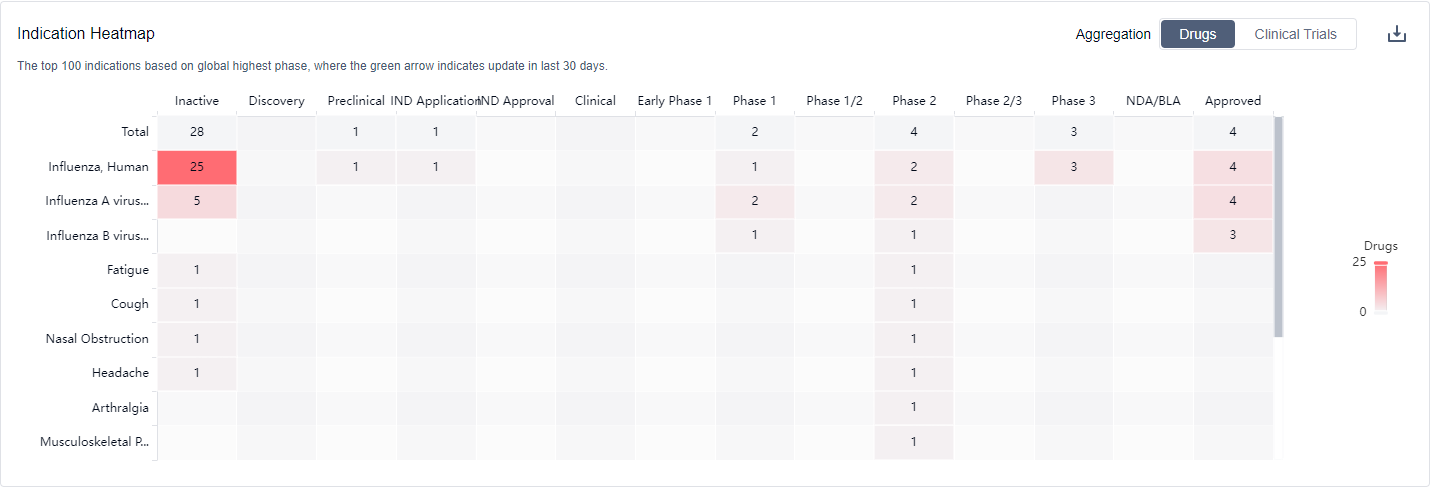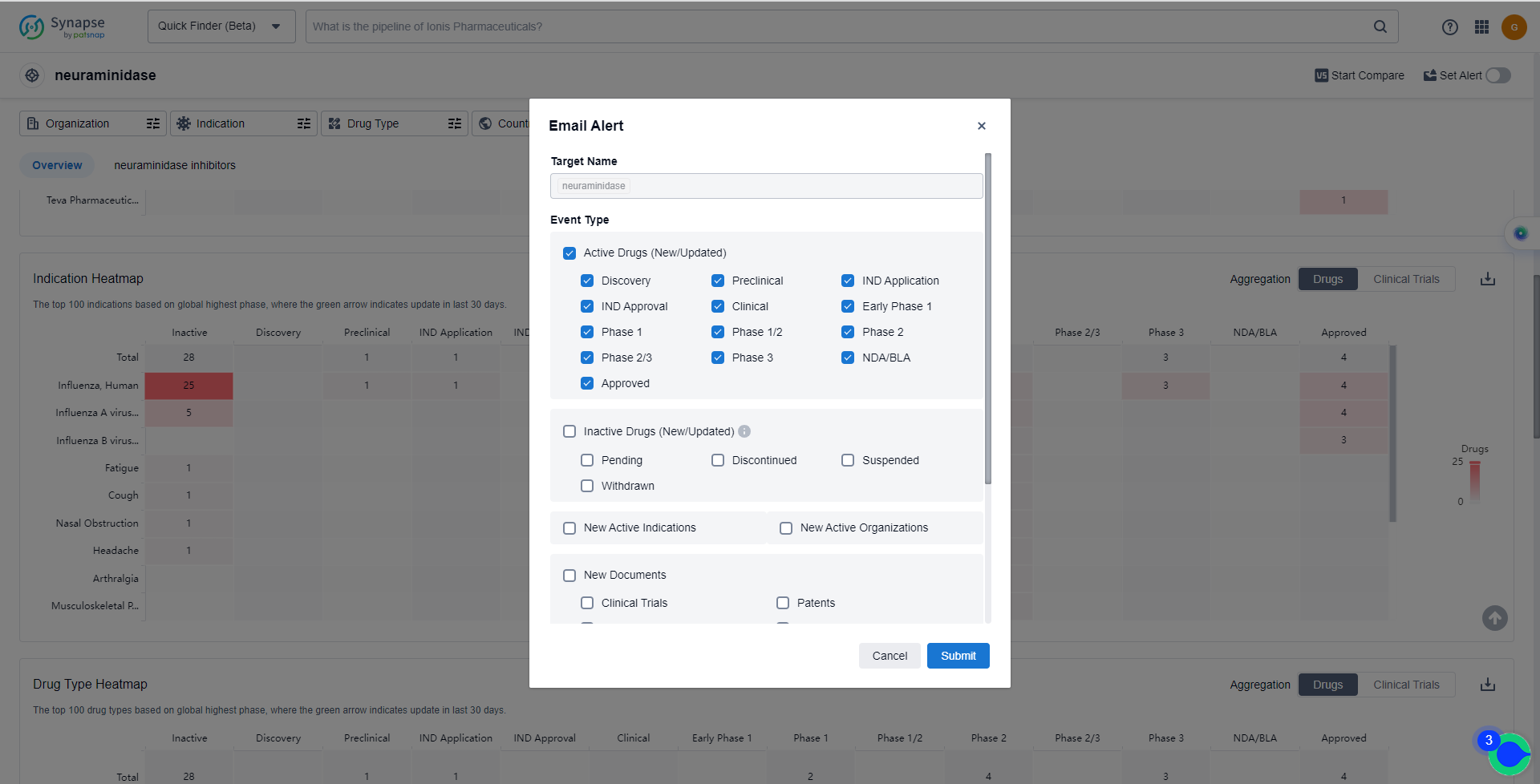What are neuraminidase inhibitors and how do you quickly get the latest development progress?
Neuraminidase is an enzyme found in the human body that plays a crucial role in various physiological processes. It is primarily responsible for cleaving or breaking down the glycosidic bonds between sialic acid residues and other molecules. This action allows for the release of newly formed viral particles from infected cells, aiding in the spread of certain viruses, such as influenza. Neuraminidase also plays a role in cell signaling, cell adhesion, and the regulation of immune responses. Understanding the function of neuraminidase is essential in developing targeted therapies and vaccines to combat viral infections and other diseases.
The analysis of the target neuraminidase in the pharmaceutical industry reveals a competitive landscape with multiple companies actively involved in research and development. BioCryst Pharmaceuticals, Inc., GSK Plc, and Roche Holding AG have made significant progress with approved drugs. The focus is primarily on treating influenza and related symptoms, with indications such as Influenza, Human, Influenza A virus infection, and Influenza B virus infection. Small molecule drugs dominate the development pipeline, with potential competition from biosimilars. The development of drugs targeting neuraminidase is not limited to specific countries, with Japan, the United States, China, and the European Union leading the way. China has shown notable progress in this field. Overall, the target neuraminidase presents opportunities for further research and development in the pharmaceutical industry.
How do they work?
Neuraminidase inhibitors are a class of drugs that are used to treat and prevent influenza virus infections. From a biomedical perspective, neuraminidase inhibitors work by targeting the neuraminidase enzyme, which is found on the surface of the influenza virus. This enzyme plays a crucial role in the release of newly formed virus particles from infected cells, allowing the virus to spread and infect other cells in the body. By inhibiting the activity of neuraminidase, these drugs prevent the release of viral particles and help to reduce the severity and duration of influenza symptoms.
Neuraminidase inhibitors are commonly used in the treatment of both seasonal and pandemic influenza. They can be taken orally or administered through inhalation, and they are most effective when started within 48 hours of the onset of symptoms. These drugs can help to alleviate symptoms such as fever, cough, sore throat, and body aches, and they may also reduce the risk of complications associated with influenza, particularly in high-risk individuals such as the elderly, young children, and those with underlying medical conditions.
Some examples of neuraminidase inhibitors include oseltamivir (Tamiflu), zanamivir (Relenza), and peramivir (Rapivab). These drugs have been extensively studied and approved for use in many countries worldwide. However, it is important to note that the emergence of drug-resistant strains of influenza viruses can limit the effectiveness of neuraminidase inhibitors. Therefore, it is recommended to use these drugs in accordance with local guidelines and in combination with other preventive measures such as vaccination to effectively control influenza outbreaks.
List of neuraminidase Inhibitors
The currently marketed neuraminidase inhibitors include:
- Laninamivir Octanoate Hydrate
- Peramivir
- Oseltamivir Phosphate
- Zanamivir
- AB-5080
- AV5080
- CD-388
- HNC042
- Oseltamivir/Pimodivir
- CD-377
For more information, please click on the image below.
What are neuraminidase inhibitors used for?
neuraminidase inhibitors are under investigation for indications such as Influenza, Human, Influenza A virus infection, and Influenza B virus infection. For more information, please click on the image below to log in and search.
How to obtain the latest development progress of neuraminidase inhibitors?
In the Synapse database, you can keep abreast of the latest research and development advances of neuraminidase inhibitors anywhere and anytime, daily or weekly, through the "Set Alert" function. Click on the image below to embark on a brand new journey of drug discovery!








